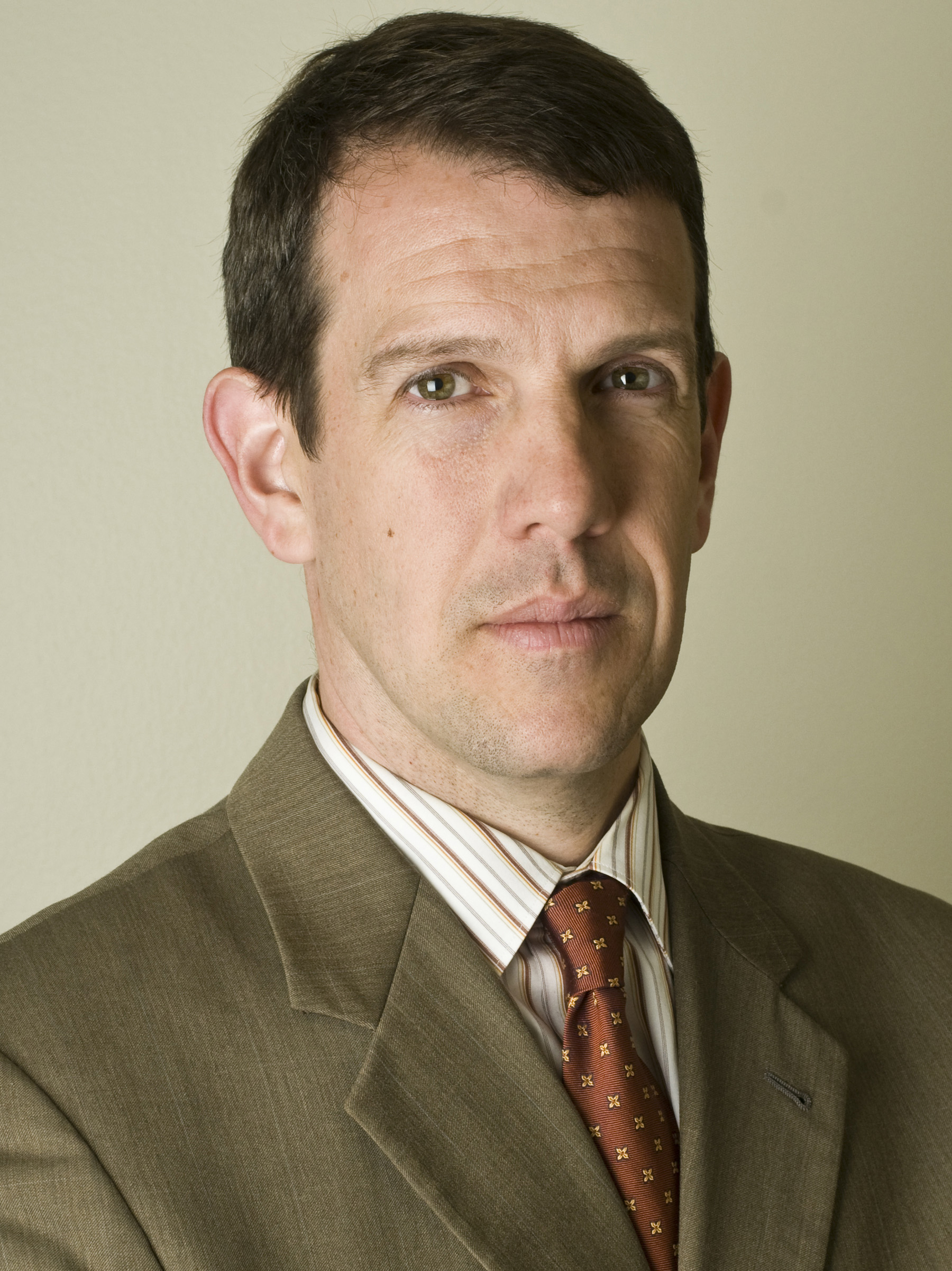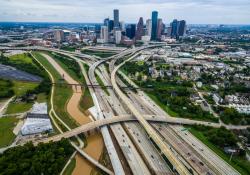
James Corless
Transportation for America's James Corless talks about the changes needed in the US's transportation policy
Anew report, 'Smart Mobility for a 21st Century America', highlights how improving efficiency through technology is critical as the US's population grows and ages, budgets tighten and consumer preferences shift. The report was co-authored byIt adds significantly to the body of informed opinion asking for fundamental change in the US's transportation sector - not least because one of the co-authoring organisations, Transportation for America, includes in its 500-strong membership many organisations (such as public health organisations, developers and realtors) which have traditionally been held to be on the periphery of the debate.
"We wanted to explore how technology is used and how things might be improved," says Transportation for America Director, James Corless. "The reality is that despite all the good work that's already been done we're still, as we approach a re-write of the Transportation Bill, trapped in a mindset which says that we have to build our way out of the problem. For too many senior policymakers, ITS is a tack-on - the last few sentences which are stuck on the end of a report or strategy document."
Lack of integration
"With some honourable exceptions, it's difficult to see ITS as yet being properly and truly integrated into a comprehensive system which works well. Our coalition strongly believes in a transportation system which provides more options. We're less interested in making vehicles smarter so much as making transportation systems smarter. The emphasis should be on greater travel options being second nature. We also need to be placing greater emphasis on creating more liveable communities."That 20th century mindset of building to meet demand still has its place in some circumstances. But if we look at growth projections in terms of population and vehicle miles travelled it can't be the only solution. We can no longer build unpriced capacity, for example." The root causes of how the US came to be in the position it is in are many, varied, complex and often inter-dependent. In part, the status quo is maintained by the financial and political lobbying power of the traditional road-building sector. However, says Corless, that doesn't explain everything.
"In transportation, we're trying to look backwards. We assume that the next 40 years will be like the last 40; we try to approach things with an 'as they were' attitude. It really isn't easy to be innovative in such an environment. There's not yet been enough of a shake-up in terms of attitude and yet what many people don't, or refuse, to realise is that we're already in the middle of a financial crisis. Transportation ran out of money and has been living on its credit card for some time now.
"We still see a lot of state-level power, something which reaches back over a century to the building of farm-to-market roads. Even the Interstate system was built through federal aid to states, rather than being a federal programme per se. We're going to see a significant number of new state governors in power before January and we need those people to re-think their states' transportation programmes. There are very few sustainable paths out there under the current model."
State, federal or regional?
"There's always the debate over whether federal government's role should increase but in many respects that's a false choice: state lines are a political reality of the 19th century and the reality is that we've developed around regional economies in more recent times. There has been some regional planning and governance but not as much as there needs to be - transportation, access, air quality and housing are all regional issues. We shouldn't be thinking in terms of federal government versus 50 states but in terms of cohesive action as economic regions."Very few cities have city-level transportation organisations any more. They've outgrown them. But robust dialogue is needed between cities about regional accessibility. It all means that the transportation sector needs to become more politically astute - to think in more political terms of who pays and who benefits." Another issue is that we tend to debate in extremes - in terms of suburbs versus cities, young versus old, or highways versus public transportation. Corless says that such polarisation is becoming less and less relevant.
"The US is a suburban nation but we're seeing lots of demographic changes. We're seeing Baby Boomers retire and head back into urban areas. More lower-income people are moving out to the suburbs. And inner-ring suburbs have different transportation needs to the latest exurbs.
"We may have legacy issues to deal with in a country that grew upwards and outwards post-WWII but there's a lot of interest in reinvesting in the suburbs. It hasn't happened yet but I can foresee a fascinating coalition arising of suburbs looking to realise their true worth. There's no perfect answer to dealing with our infrastructure legacy but the entrepreneurial opportunities are definitely there. We are already seeing revitalisation, as old strip malls re-open as something entirely new. We're not necessarily talking about urban communities but we are seeing something which is more walkable and compact."
Changing lifestyles
Lifestyle choices are also driving change, he continues."In the US we have land and space but the majority of people don't want to live in the middle of nowhere. They want amenities and culture, whether it's a small town, suburb or city. Realtors are seeing significant interest in the types of properties which offer those kinds of access. Walkable communities are very desirable now and things like bus rapid transit are the way of the future.
"It's not that we'll move away from being a nation of drivers, I think, but we are seeing a new zeitgeist. Teens and 20-somethings for instance are not only delaying when they get married, they're also putting off getting their driving licences until later.
"People aren't necessarily doing this out of altruism - a greater environmental awareness or because they think it's good for the nation. It's all about lifestyle choice. But we've stumbled upon a demand that's very hard to satisfy with traditional zoning codes and so on. There's a debate in the US, with many libertarians saying that the federal government can't dictate where people should live, and yet local governments' Euclidian zoning has for many years done exactly that. At the turn of the 20th century, that made sense - not having people live next to factories and so on. But it meant that post-WWII communities became very segregated in every sense of the word. As it stands, it's much harder to build mixed-use communities than single-use communities with their attendant sprawl. We lock ourselves into transportation patterns that we just can't sustain."
The digital economy
"I came to my current job from California, where amongst other things telecommuting has emerged as an environmental solution. In DC, however, the prevalent attitude seems to be, 'Let some people do it some of the time, so long as it doesn't affect productivity.' It's not seen as a serious transportation solution. And yet we need to start adequately addressing the need to travel; we have the technologies available now that will allow us to do that at a realistic price point. This isn't a 'tomorrow solution' that we're talking about."We have an ITS Caucus up on Capitol Hill. In many respects, that's wonderful. However it's also illustrative of just how far we still have to go - that ITS remains in the hands of a small group of experts underlines that it still isn't mainstream, that we're still not marrying up technologies as we should be.
"Especially as we move forward with a new, more conservative Congress which is looking to reduce debt, I see two main challenges. One is to gain a realisation among the political classes that our 20th century infrastructure is crumbling and that we must, even in times of major recession, look to invest in and fix it. The other is that building a new, 21st century infrastructure is not just good business. Yes, it will help us to remain economically competitive internationally. But perhaps just as importantly it will also save us money in the longer term.
"We have a new crop of Republicans coming in who want to reduce cost. We're going to be using this report to try to convince people that it's perfectly possible to do more with less - and show them how."












